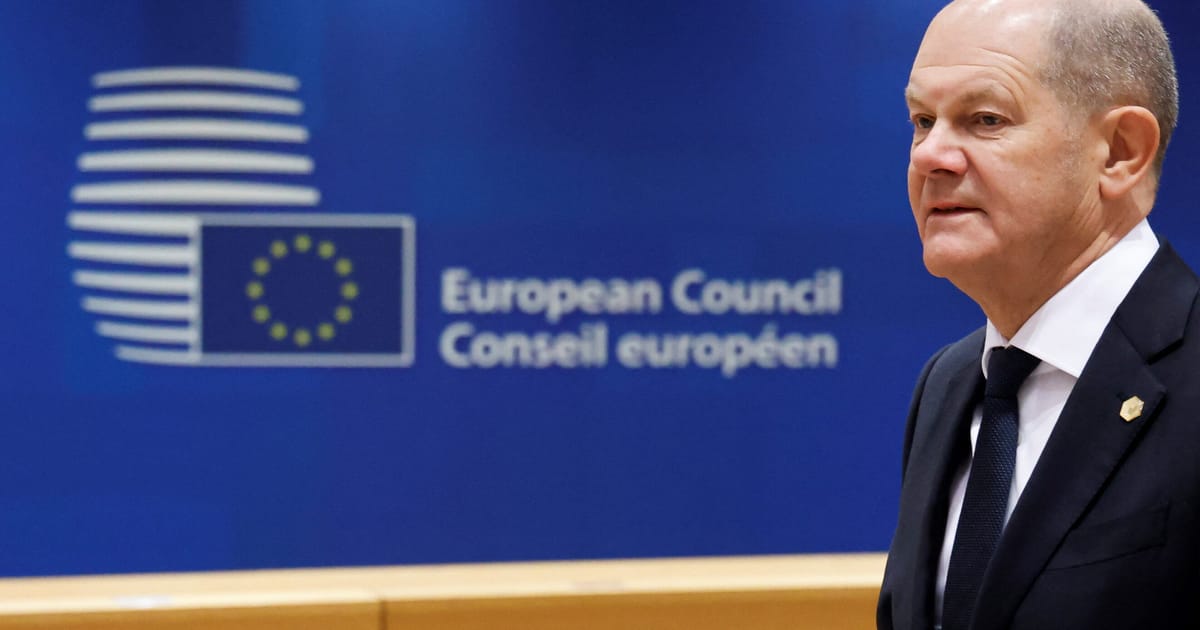Suddenly the perceived tank laggard is positioning himself as the tank vanguard.
German Chancellor Olaf Scholz on Thursday urged his European partners to stop dragging their feet when it comes to delivering heavy military support for Ukraine — an exhortation that comes after Berlin faced its own criticism for slow-walking a tank delivery decision.
Speaking during an EU leaders’ summit in Brussels, Scholz told reporters that Berlin had been “very fast” in supplying Kyiv with modern Leopard tanks — and now others needed to follow, especially those who had once been pressuring Germany.
“Germany is making a very central contribution to ensuring that we provide rapid support, as we have done in the past,” Scholz said.
He added: “We are striving to ensure that many others who have come forward in the past now follow up on this finger-pointing with practical action.”
For weeks, Scholz faced mounting criticism from allies for hesitating on tank deliveries. The German chancellor ultimately relented after the U.S. agreed to send its own advanced tanks. Scholz said Germany would deliver 14 Leopard 2 A6 tanks as part of a broader coalition that would aim to supply 80 Leopard 2s.
Since then, however, some partners have been reluctant to contribute to the alliance, which now risks imperiling efforts to get a sufficient amount of tanks to Ukraine before an expected Russian spring offensive.
The chancellor did not directly shame any countries by name for this, but part of his frustration is likely directed at countries like Finland, which signaled last month that it might send Leopards if Germany also did but has not yet followed through.
“Finland has yet to indicate whether it will provide tanks or other forms of assistance, such as maintenance,” a Finnish official told POLITICO.
Sweden, another partner that initially seemed open to sending Leopards, also hasn’t yet decided what to do. Spain said it is currently refurbishing older Leopard 2 A4 tanks, but it is unclear when they will arrive in Ukraine, and how many of them. Meanwhile, Portuguese Prime Minister António Costa said Wednesday his country would deliver three Leopard 2 tanks — less than Berlin had hoped for. Canada said it would send four Leopards.
Dutch Prime Minister Mark Rutte had similarly previously raised the possibility that The Hague could buy some of the Leopard 2 tanks it currently leases from Germany and send them to Ukraine. But Rutte was evasive at the EU summit on Thursday, saying only, “that’s something we’re [still] discussing with our partners.”
Rutte also suggested that, instead of sending Leopard 2s to Ukraine, the Netherlands might send those tanks to Lithuania to reinforce NATO’s eastern flank.
German officials say Defense Minister Boris Pistorius and even Scholz himself have worked the phones in recent days to urge allies to step up, as Spiegel first reported. A failure to rally sufficient support could boomerang on Scholz, given his claims that he coordinated his tank decision closely with allies.
Berlin is currently training Ukrainian soldiers on the Leopard tanks and aims to send the vehicles to Ukraine toward the end of next month.
Poland, which has been the most vocal critic of Scholz in the past, has agreed to send Leopard 2 tanks, albeit of the older 2 A4 model.
Earlier this week, Denmark, the Netherlands and Germany also announced they would jointly send at least 100 units of the much older Leopard 1 A5 tank to Kyiv, which is not part of Scholz’s initially announced tank coalition.
Lili Bayer and Wilhelmine von Preußen contributed reporting.



